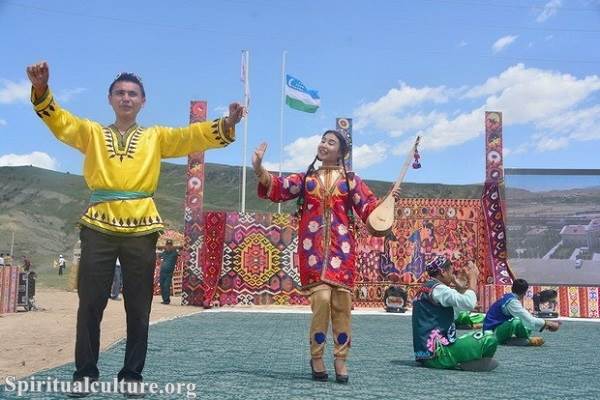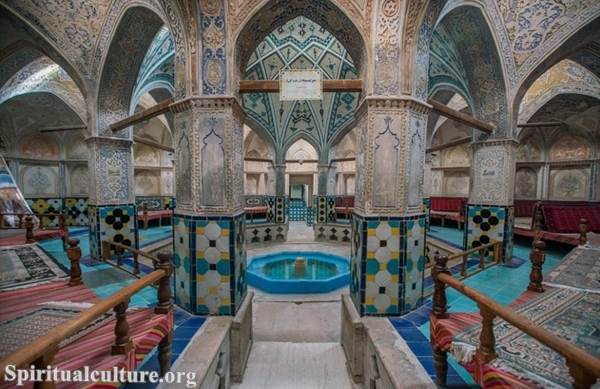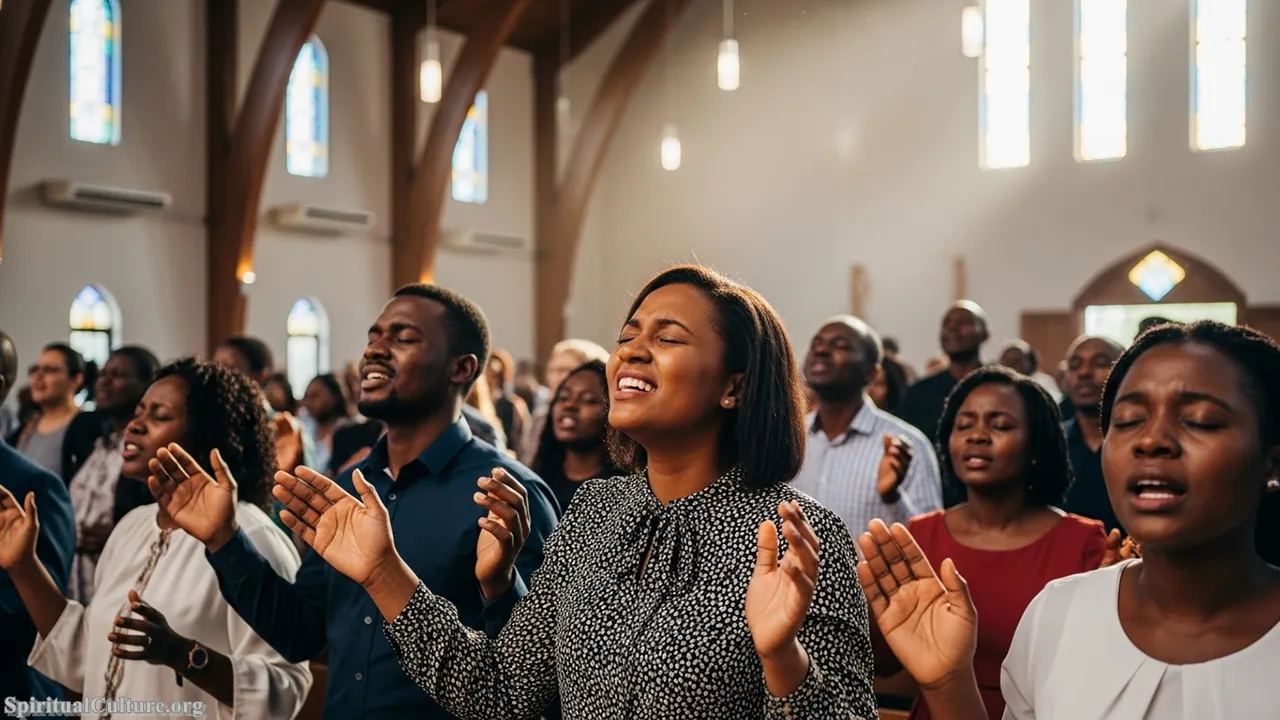Canada, a nation globally recognized for its commitment to multiculturalism and diversity, is a rich tapestry of Indigenous, European, and global cultural traditions. This diversity finds its most vibrant expression in a calendar packed with festivals that transcend mere entertainment, acting as powerful community anchors and spiritual touchstones. From coast to coast, these celebrations—ranging from ancestral Indigenous gatherings to mass civic holidays—reflect the country’s unique history, geography, and inclusive social values.
At Spiritual Culture, we believe a festival’s true greatness lies not just in its size, but in its ability to embody and transmit profound cultural and spiritual significance. Our Top 10 list, validated by data current as of the Current Time of Writing, focuses on events that most deeply influence national identity, preserve heritage, and foster community spirit across diverse populations.
These festivals serve as modern-day rituals, momentarily unifying a vast nation and reminding participants of the deep roots and evolving values that define the Canadian experience. The following ranking reflects an analysis of historical roots, cultural preservation value, community cohesion impact, and demonstrable spiritual resonance within the Canadian context.
Table of the Top 10 Most Celebrated Festivals in Canada by Cultural and Spiritual Significance
| Rank | Festival Name | Location | Primary Cultural/Spiritual Focus | Estimated Annual Attendance/Participants |
|---|---|---|---|---|
| 1 | Canada Day Celebrations | Nationwide (Largest in Ottawa) | National Identity, Unity, Confederation Heritage | Millions Nationwide |
| 2 | Toronto Caribbean Carnival (Caribana) | Toronto, Ontario | Caribbean Diaspora Culture, Freedom, Self-Expression | Over 2 Million |
| 3 | The Calgary Stampede | Calgary, Alberta | Western Heritage, Agricultural Roots, Cowboy Spirit | Over 1 Million |
| 4 | Folklorama | Winnipeg, Manitoba | Multicultural Heritage, Global Community Cohesion | Approx. 400,000 – 500,000 |
| 5 | Quebec Winter Carnival (Carnaval de Québec) | Quebec City, Quebec | Francophone Heritage, Winter Resilience, Joy | Approx. 500,000 |
| 6 | Indigenous Powwows (Nationwide) | Various Locations (e.g., N.I.C.E. Powwow, Edmonton) | First Nations, Métis, and Inuit Spirituality, Tradition, and Sovereignty | Thousands to Tens of Thousands per event |
| 7 | Vaisakhi Parades (Khalsa Day) | Surrey, BC and Malton/Toronto, ON | Sikh Religious and Community Observance, Khalsa Creation | Hundreds of Thousands (Surrey parade is one of the largest outside India) |
| 8 | Montreal International Jazz Festival | Montreal, Quebec | Cultural Exchange, Artistic Expression, Global Music Heritage | Over 2 Million (Attendees to free outdoor shows) |
| 9 | Diwali Celebrations (Festival of Lights) | Major Cities (e.g., Toronto, Vancouver) | Hindu, Sikh, Jain Spirituality, Triumph of Light over Darkness | Thousands attending public events; Millions celebrating privately |
| 10 | Canadian Tulip Festival | Ottawa, Ontario | National Memory, Gratitude, International Friendship | Approx. 500,000 |
Top 10. Canadian Tulip Festival
The Canadian Tulip Festival, held annually in Ottawa, transforms the capital into a vibrant canvas of color, marking one of the world’s largest tulip displays. This festival’s unique cultural foundation lies in its origin as a gift from the Dutch Royal Family to Canada, a gesture of thanks for sheltering Princess Juliana and her family during the Nazi occupation and for the role Canadian soldiers played in the liberation of the Netherlands in 1945. More than just a floral exhibition, it is a profound living symbol of a long-standing, deep international friendship and a tangible expression of gratitude that is renewed every spring.
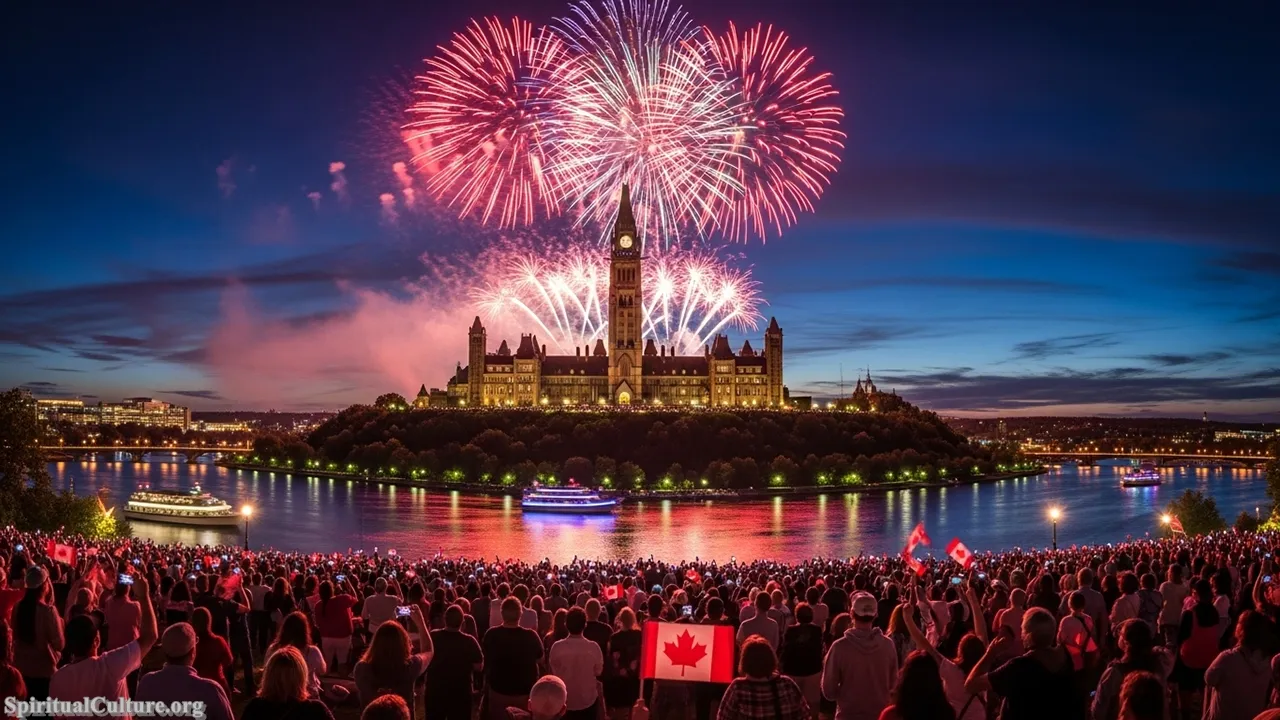
The festival’s reason for ranking is rooted in its spiritual impact as an act of perpetual remembrance and thanks. The blooming tulips offer a gentle, yet powerful, annual commemoration of historical sacrifice, international solidarity, and the enduring human values of freedom and peace. The sight of millions of blossoms represents the renewal of life and the light that followed a dark period of war, making the event a secular ritual of gratitude that touches on deep spiritual themes of rebirth and hope.
The ultimate reflection offered by the Tulip Festival is the preservation value of collective national memory. It teaches that gratitude is an active, beautiful, and yearly commitment, inspiring Canadians to reflect on their nation’s role in global history and the timeless bonds forged by shared struggle and mutual support. It underscores that true heritage often stems from compassionate action.
Cultural/Spiritual Highlights
- Symbol of Friendship: Directly symbolizes the enduring bond between Canada and the Netherlands.
- Royal Connection: Began with a direct bulb donation from Princess Juliana in 1945.
- Remembrance: Serves as a beautiful, peaceful memorial to Canadian troops who fought for freedom.
- Renewal: The annual blossoming represents the cycle of renewal and the triumph of life after winter and conflict.
Top 9. Diwali Celebrations (Festival of Lights)
Diwali, the Hindu, Sikh, and Jain festival of lights, has become a highly visible and essential part of the Canadian cultural landscape, celebrated across major metropolitan areas like Toronto, Vancouver, and Calgary. As a country with a significant and growing South Asian diaspora, public and private celebrations of Diwali—featuring diyas (oil lamps), elaborate feasts, and community events—illustrate Canada’s successful embrace of global spiritual traditions. The festival lights up community centers and homes every autumn, marking the spiritual new year for many.
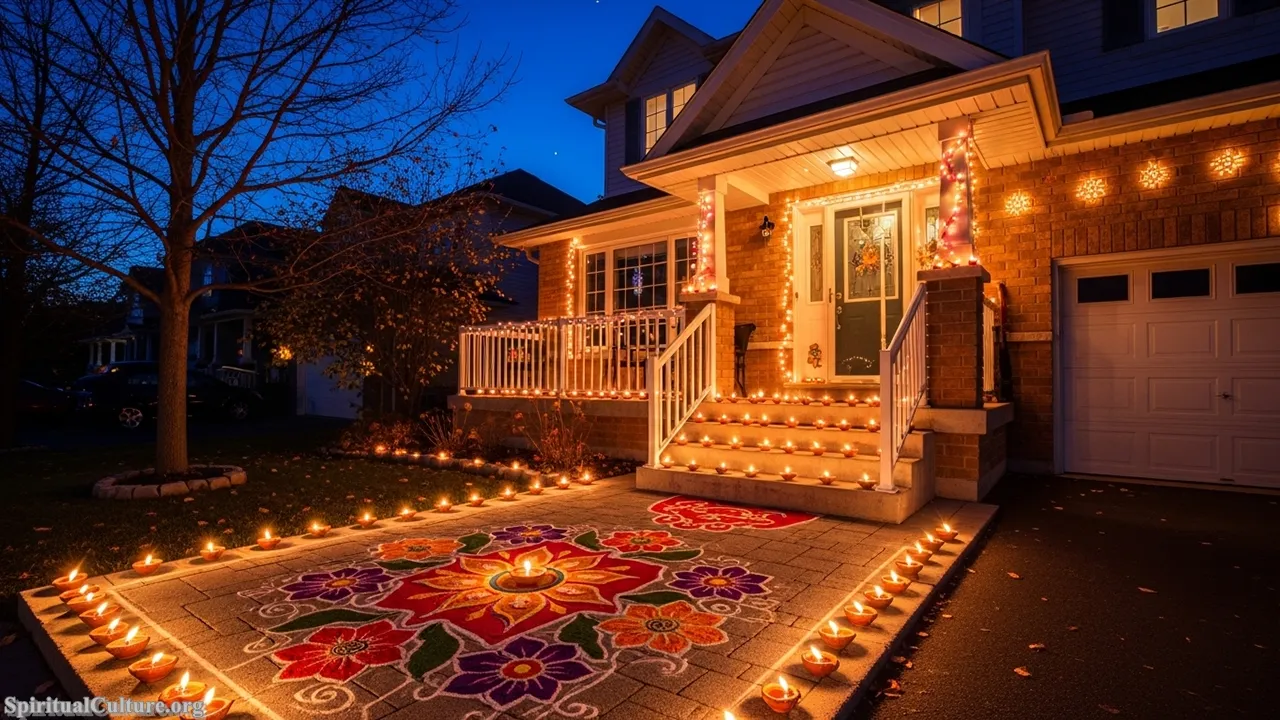
Diwali ranks for its deep spiritual value centered on the universal theme of light conquering darkness, knowledge over ignorance, and good over evil. The ceremonial lighting of lamps is a collective act of spiritual intention, guiding adherents toward an enlightened path. In a Canadian context, these public celebrations serve an important cultural function, allowing immigrant communities to maintain and share their profound spiritual heritage, thereby enriching the Canadian cultural mosaic.
The moral lesson of Diwali in the Canadian public sphere is the celebration of inner light and resilience—a timely reflection for a northern country entering the dark winter months. Furthermore, the festival’s widespread celebration reinforces the nation’s commitment to diversity, demonstrating that profound spiritual observance from any tradition can be publicly and proudly celebrated, fostering unity in a truly multicultural environment.
Cultural/Spiritual Highlights
- Triumph of Good: Represents the victory of Lord Rama over Ravana (Hinduism) and the release of the Sixth Guru Hargobind Ji (Sikhism).
- Lamps (Diyas): The millions of lights symbolize the spiritual awakening and the inner light that protects against spiritual darkness.
- Community Cohesion: Large public events and neighborhood gatherings showcase multicultural harmony and shared joy.
- Spiritual New Year: Marks the beginning of a new financial and spiritual year for many practitioners.
Top 8. Montreal International Jazz Festival
The Montreal International Jazz Festival is the world’s largest jazz festival and a monumental fixture in Quebec’s cultural year, drawing over 2 million free-show attendees alone. While seemingly secular, its spiritual impact lies in its celebration of a musical form—jazz—that emerged from a struggle for freedom, expression, and identity, rooted deeply in the African American cultural experience. It is a powerful example of how art can transcend boundaries and embody the human spirit’s capacity for improvisation and innovation.
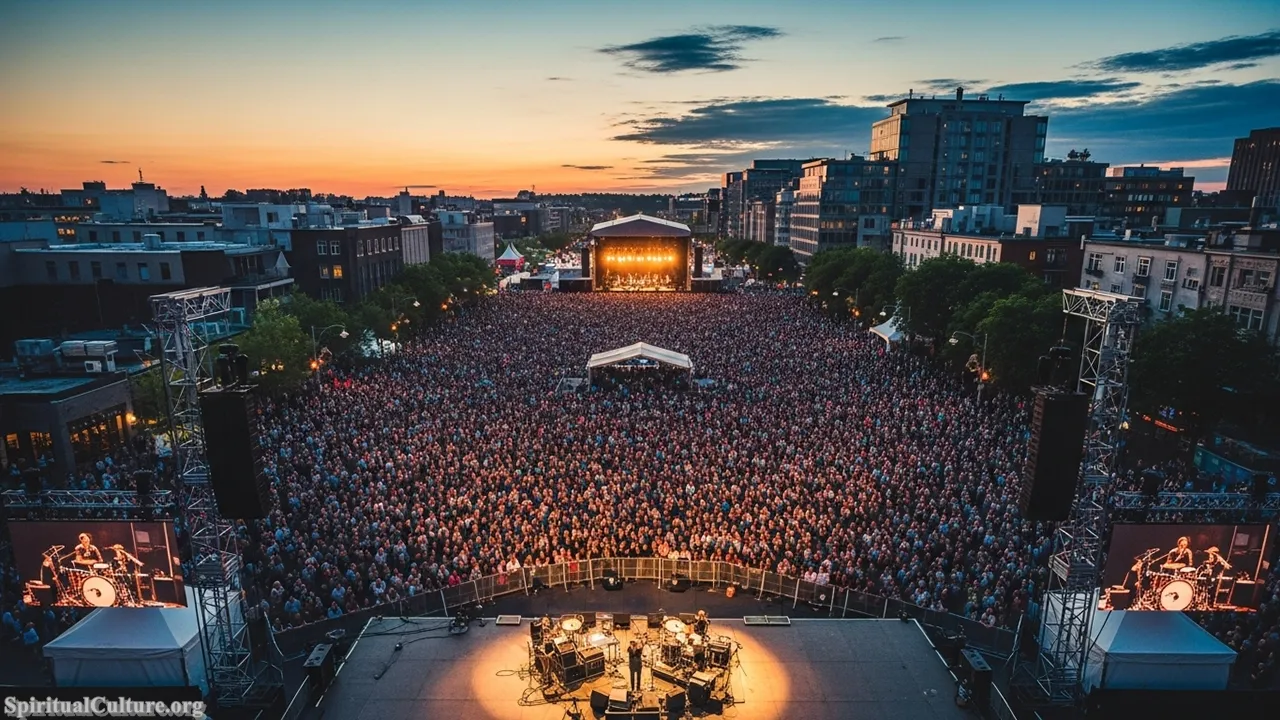
This festival ranks highly because it is a colossal cultural exchange that elevates artistic freedom to a spiritual principle. By offering hundreds of free outdoor concerts, it democratizes high-level artistic expression, inviting participants into a collective state of transcendent, improvisational creativity. It transforms the city’s downtown core into a sacred space for a week, dedicated entirely to the communion between performer and audience through the universal language of rhythm and harmony.
The reflective value is that of cultural acceptance and universal language. The sheer scale of the festival, welcoming artists and audiences from every corner of the globe, proves that genuine human connection is found in shared moments of beauty and complexity. It’s a testament to the belief that profound, spiritual meaning can be accessed through shared artistic expression.
Cultural/Spiritual Highlights
- Improvisation as Freedom: Celebrates the spontaneous creativity and emotional depth inherent in the jazz form.
- Cultural Exchange: Brings together over 3,000 artists from 30+ countries, promoting global understanding.
- Democratization of Art: Hundreds of free shows embody an ethos of accessible cultural enrichment.
- World Record Status: Guinness World Record holder as the planet’s largest jazz festival.
Top 7. Vaisakhi Parades (Khalsa Day)
Vaisakhi, or Khalsa Day, is the most sacred festival in the Sikh calendar, commemorating the formation of the Khalsa by Guru Gobind Singh in 1699. In Canada, especially in areas with large Sikh populations like Surrey, BC, and Malton (Toronto), the Vaisakhi Parades are massive, vibrant, and deeply spiritual processions. These Nagar Kirtans (street singing) are powerful public declarations of faith, commitment to social justice, and the Sikh principles of equality and selfless service (seva).
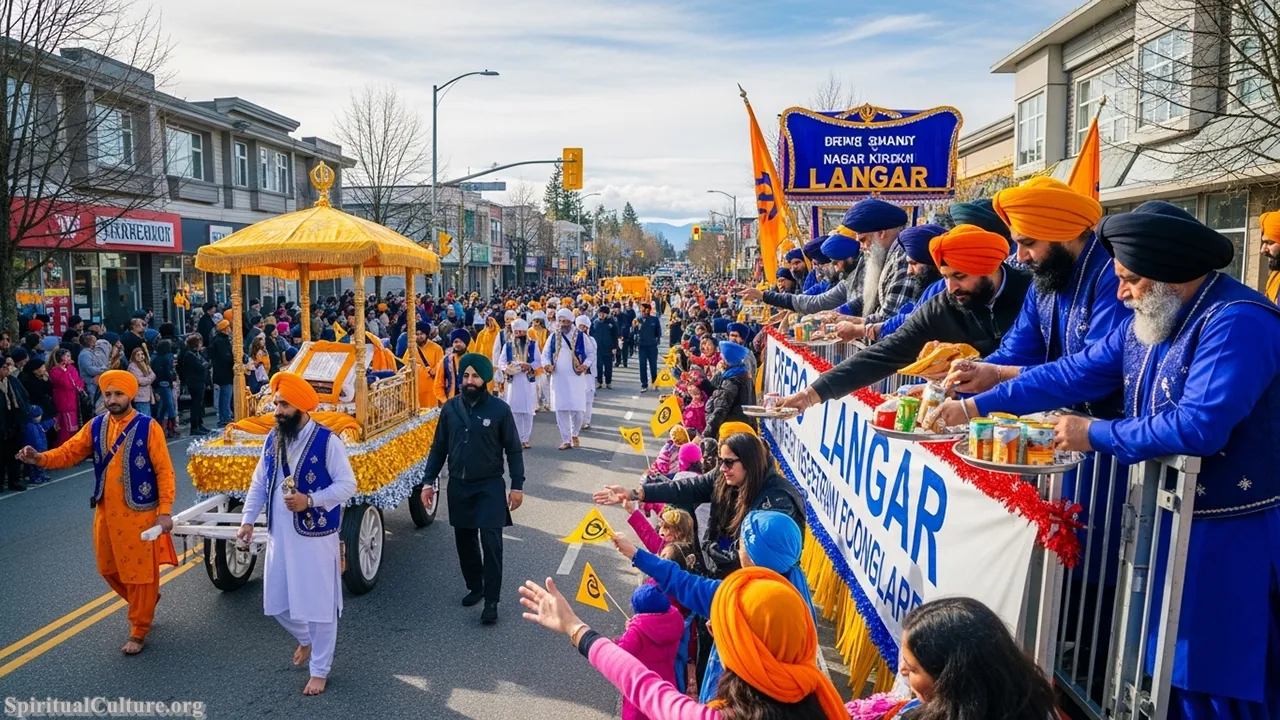
The ranking is justified by the profound spiritual commitment demonstrated through the public celebration. The processions, which involve singing holy hymns, martial arts demonstrations, and the preparation and distribution of Langar (free communal meals) to hundreds of thousands of non-Sikh attendees, exemplify the core Sikh values. This is not just a parade; it is an annual, voluntary, and massive act of spiritual service that actively manifests the Sikh ideals of humility, equality, and radical hospitality into the public square.
The preservation value is immense, as the festival showcases an unbroken spiritual tradition in a modern, Western context. It offers a powerful moral lesson about selfless service (seva) as a pillar of spiritual life, reminding the larger Canadian society that true faith is always coupled with action that benefits the entire community, irrespective of background or belief.
Cultural/Spiritual Highlights
- Khalsa Commemoration: Celebrates the collective spiritual and military initiation of the Sikh order.
- Langar Service: Massive public distribution of free food symbolizing the equality of all people.
- Nagar Kirtan: Processions involving the singing of sacred hymns, showcasing public devotion.
- Social Justice: Reinforces the Sikh commitment to fighting oppression and upholding human rights.
Top 6. Indigenous Powwows (Nationwide)
Held across the nation, Indigenous Powwows—including major events like the N.I.C.E. Powwow in Edmonton—are vibrant, sacred gatherings of First Nations, Métis, and Inuit peoples. They are a resurgence of traditional spiritual practices, involving drumming, singing, feasting, and the sacred ritual of traditional dance in elaborate regalia. These ceremonies, once suppressed, are now vital cultural pillars, reasserting Indigenous identity and sovereignty.

Powwows are ranked highly for their undeniable spiritual and historical significance as a key mechanism of cultural survival and revitalization. They are a sacred connection to the land, ancestors, and the Creator, where the drumbeat acts as the heartbeat of the Indigenous nations. The sharing of songs, stories, and dance forms reinforces deep communal bonds and transmits ancestral spiritual knowledge to younger generations in a sacred, protected space.
The reflection a Powwow offers the entire nation is one of reconciliation and respect for resilience. They are a powerful demonstration of the enduring strength and beauty of the original inhabitants of the land. Their preservation value lies in educating non-Indigenous Canadians about the richness of this heritage, fostering respect, and actively contributing to the ongoing journey of reconciliation by making these vital spiritual practices visible.
Cultural/Spiritual Highlights
- Sacred Drum: The drum is revered as the heartbeat of the people, connecting participants to the Creator and Earth.
- Ancestral Connection: Dances and songs are often spiritual prayers and historical narratives passed down for generations.
- Cultural Resurgence: Symbolizes the survival and revitalization of traditions following decades of government suppression.
- Community & Kinship: Acts as a vital gathering for family reunions, intertribal sharing, and social teaching.
Top 5. Quebec Winter Carnival (Carnaval de Québec)
The Carnaval de Québec is the world’s largest winter carnival and the ultimate celebration of Quebec’s Francophone heritage and its tenacious approach to the harsh Canadian winter. Far from a purely secular event, this festival, centered around the iconic figure Bonhomme Carnaval, taps into the spiritual resilience and communal joy needed to thrive in a northern climate. Its historical roots are in the pre-Lenten celebrations, a period of feasting before the spiritual fast, linking it to ancient, cyclical Catholic traditions.
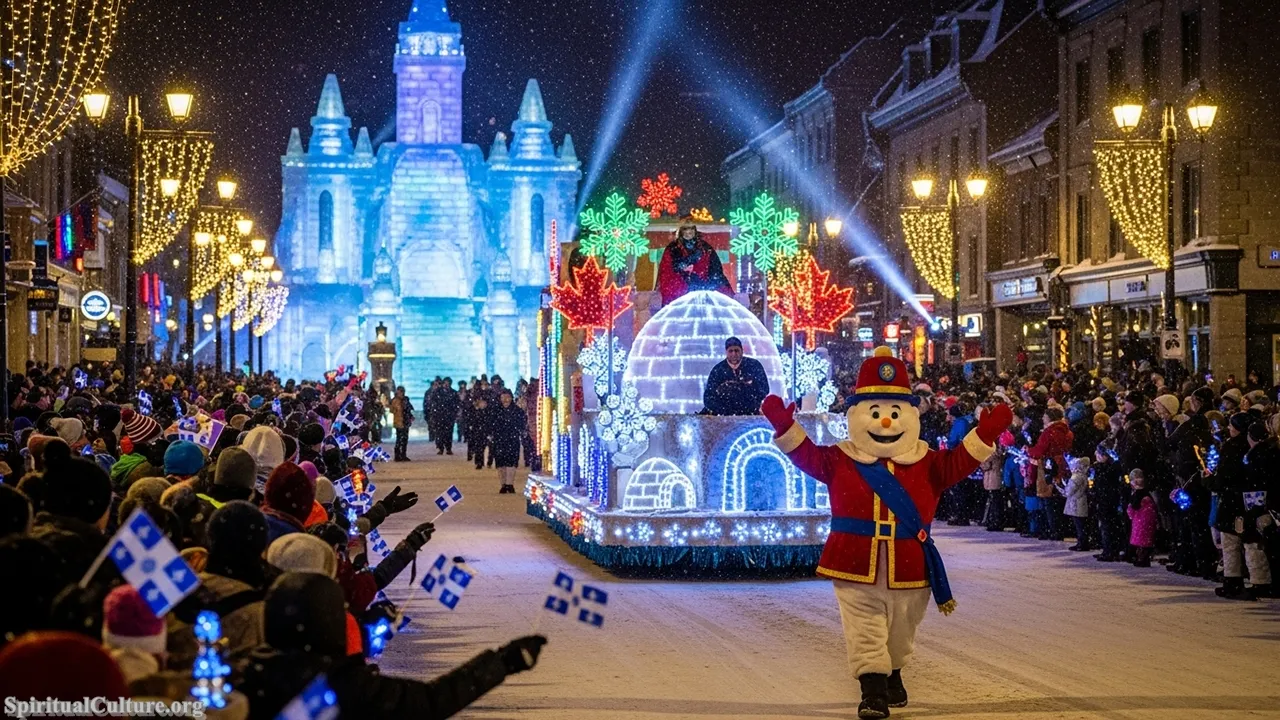
The festival earns its spot by showcasing a profound cultural and psychological spirit of resilience—a defining trait of the Quebecois identity. The spectacular night parades, ice sculptures, and outdoor feasting are collective acts of defiance against the cold, emphasizing that joy and community triumph over environmental hardship. This shared, celebratory experience deepens the unique cultural bond of French-speaking North America, maintaining an essential linguistic and cultural identity.
The preservation value of the Winter Carnival is in its celebration of a distinct way of life and its lesson in embracing cyclical change. It teaches that the dark, challenging aspects of life (the long winter) can be transformed into a source of unique cultural celebration and communal strength through imagination, art, and collective action.
Cultural/Spiritual Highlights
- Pre-Lenten Roots: Historically linked to the spiritual tradition of feasting before the Lenten fast.
- Bonhomme Carnaval: Mascot symbolizes the “joie de vivre” (joy of living) and winter resilience.
- Francophone Heritage: A premier expression and preservation of the unique Quebecois identity.
- Collective Defiance: Celebrates the communal effort required to thrive in extreme northern latitudes.
Top 4. Folklorama
Held annually in Winnipeg, Manitoba, Folklorama is celebrated as the world’s largest and longest-running multicultural festival of its kind. For two weeks, over 40 cultural pavilions—run by volunteer ethnocultural communities—offer attendees an immersive experience of traditional food, music, and dance from nations around the world, all within the single city of Winnipeg. It is the ultimate physical manifestation of Canada’s official policy of multiculturalism.

Folklorama ranks as a premier example of spiritual inclusion and cultural pluralism. Unlike simple exhibitions, the festival requires deep engagement from community volunteers to educate and share their distinct heritage, making it a ritual of cultural vulnerability and pride. The act of sharing traditional food and performance with strangers embodies the spiritual ideal of global kinship and mutual respect, turning the city into a temporary, harmonious “global village.”
The enduring reflection is the moral lesson that unity is found not in assimilation, but in celebration of difference. Folklorama’s preservation value is immense, providing a living platform for Canada’s many immigrant communities to actively preserve, practice, and pass on their traditional music, dance, and spiritual customs within a fully supportive national framework.
Cultural/Spiritual Highlights
- Largest Multicultural Festival: World record status as the largest and longest-running cultural event of its type.
- Cultural Pluralism: Active and immersive celebration of distinct ethnic and spiritual identities.
- Volunteer-Driven: Entirely run by thousands of community volunteers, emphasizing selfless dedication.
- Global Kinship: Creates a microcosm of the world, fostering deep inter-community understanding and respect.
Top 3. The Calgary Stampede
Billed as the “Greatest Outdoor Show on Earth,” the Calgary Stampede is a ten-day celebration of Western heritage, agriculture, and community spirit in Calgary, Alberta. Rooted in the early 20th century, the Stampede is a cultural rite of passage that connects a modern, high-tech city back to its pioneering ranching history, the oil boom, and its complex relationship with the land and the Indigenous communities who first rode it.
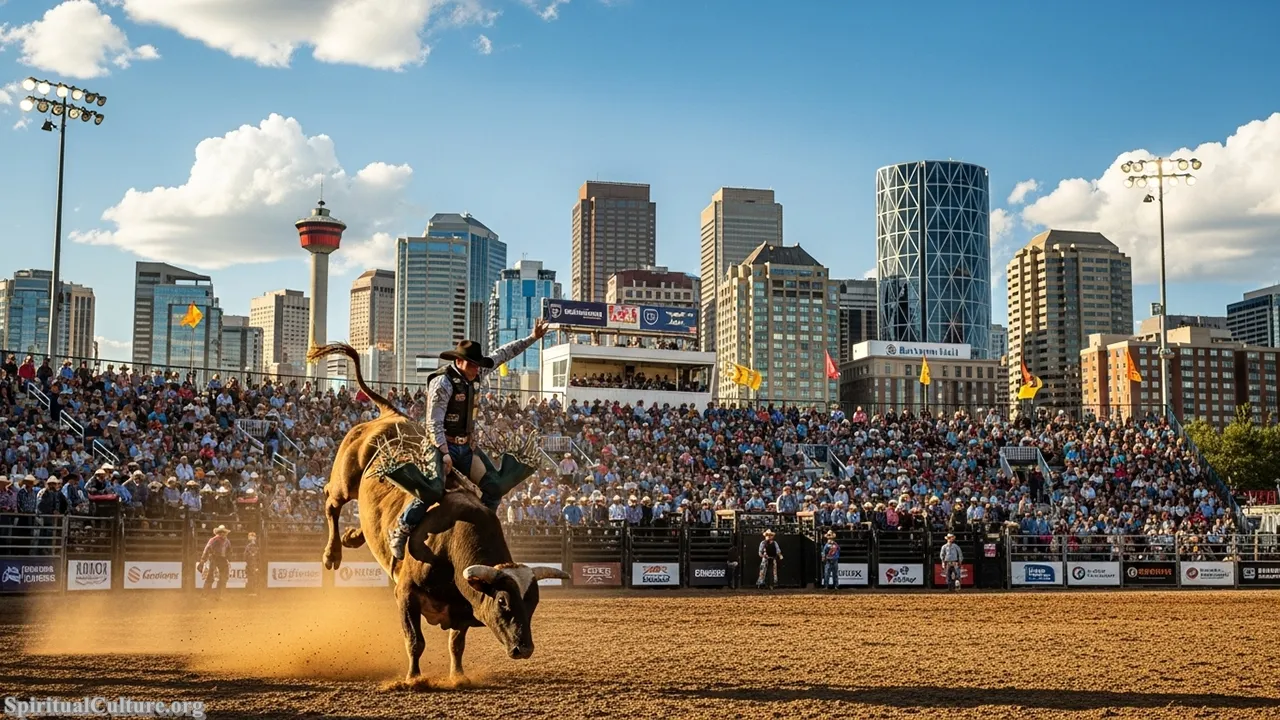
The Stampede’s spiritual significance lies in its annual revitalization of the cowboy code—an unwritten set of ethical principles centered on honesty, courage, hard work, and loyalty, all deeply connected to the natural landscape. The morning pancake breakfasts, the evening chuckwagon races, and the grand parade are powerful, ritualized expressions of frontier hospitality and the pioneering spirit. Critically, it includes a large, celebrated Indigenous component, Elbow River Camp (formerly Indian Village), which showcases the cultural contributions of the five nations of Treaty 7, adding an essential layer of heritage and reflection.
The preservation value is in maintaining the mythos of the West and its foundational values. The moral lesson is the importance of community hospitality and the rugged, moral character required to build a life in a demanding environment. It’s a collective annual recommitment to the values of grit and generosity that shaped the Canadian West.
Cultural/Spiritual Highlights
- Pioneering Spirit: Reaffirms the traditional values of the North American cowboy/rancher.
- Agricultural Roots: Celebrates the vital importance of agriculture and animal stewardship.
- Elbow River Camp: Features a significant and visible showcase of Treaty 7 First Nations culture and traditions.
- Community Hospitality: Symbolized by the famous, widespread, free community pancake breakfasts.
Top 2. Toronto Caribbean Carnival (Caribana)
The Toronto Caribbean Carnival, or Caribana, is North America’s largest street festival, drawing over 2 million spectators and participants annually. It is a spectacular, exuberant celebration of Caribbean culture, originating from the region’s long history of resistance against slavery and oppression, where Carnival was a crucial spiritual and cultural outlet. The festival’s primary event, the Grand Parade, is an explosive display of Mas (Masquerade), Calypso, and Soca, led by King and Queen competitions and elaborate, magnificent costumes.

The reason for its high ranking is its immense and profound spiritual impact as a celebration of freedom and self-determination. The Carnival is a yearly, cathartic, public ritual that transcends a mere party; it is a cultural and emotional release rooted in the resilience of the human spirit. The Mas costumes are works of art that often tell historical and mythological stories, and the music is a powerful expression of identity and liberation, making it a sacred space for the entire Caribbean diaspora to reclaim and celebrate their cultural lineage.
The reflection Caribana offers Canada is the moral lesson that joy and resistance are deeply intertwined. Its preservation value lies in actively keeping alive the traditions, languages, and spiritual narratives of the Caribbean nations, showcasing the depth of this immigrant community’s contribution and affirming that a painful past can be transformed into a vibrant, future-oriented cultural power.
Cultural/Spiritual Highlights
- Embodiment of Freedom: Rooted in the cultural resistance against slavery in the Caribbean.
- Mas and Costume: The costumes (Mas) tell powerful spiritual and historical narratives through art.
- Diaspora Identity: The largest celebration of Caribbean heritage outside the islands themselves.
- Emotional Catharsis: A collective, joyful release and reclamation of identity through music and dance.
Top 1. Canada Day Celebrations
Canada Day, celebrated every July 1st, marks the anniversary of the 1867 enactment of the Constitution Act (then the British North America Act), uniting three separate colonies into a single dominion. As the nation’s official statutory holiday, it is a nationwide event that culminates in mass gatherings, concerts, and fireworks, with the epicenter of celebration being Parliament Hill in Ottawa.

Canada Day is ranked number one because its spiritual and cultural impact is foundational to the entire Canadian experiment. It is a mandatory annual ritual of civic spirituality, where citizens of all backgrounds collectively reflect on the nation’s journey, democratic values, and aspirations. While its historical origins are complex (particularly concerning its relationship with Indigenous peoples, who observe it with reflection and protest), the day has evolved into the most significant collective act of national self-definition—a time to affirm multiculturalism, peacekeeping, and shared identity.
The ultimate reflection for Spiritual Culture is the preservation of the ideal of a unified, diverse nation. It offers the moral lesson that the spiritual commitment to nationhood is a continuous process of evolution and reconciliation. As of the Current Time of Writing, Canada Day acts as a double-edged moment: a celebration of freedom and democracy, and a necessary yearly opportunity for national reflection on what a truly inclusive and just nation must look like.
Cultural/Spiritual Highlights
- Civic Commemoration: Marks the birth of the modern Canadian federation in 1867.
- National Unity Ritual: The only national event that unites all provinces and territories in simultaneous celebration.
- Parliament Hill Focus: Ottawa’s main celebration acts as the spiritual and political center of the nation’s identity.
- Evolving Meaning: Increasingly a day for reflection on Indigenous reconciliation and the true meaning of inclusivity.
Conclusion
The festivals celebrated across Canada—from the deep-rooted Indigenous Powwows and the vibrant spiritual joy of Vaisakhi to the unifying civic pride of Canada Day—serve as far more than just calendar events. They are the living pulse of a young but profoundly diverse nation. Each festival is a dedicated period of time where a community, whether defined by geography, history, or shared faith, momentarily suspends the everyday to engage in sacred ritual, cultural preservation, and collective self-affirmation.
The cumulative effect is the vibrant, resilient, and inclusive cultural tapestry that defines the Canadian spirit as of the Current Time of Writing. At Spiritual Culture, we celebrate these expressions of heritage as essential guideposts for a global society committed to mutual respect and the enduring power of community.

